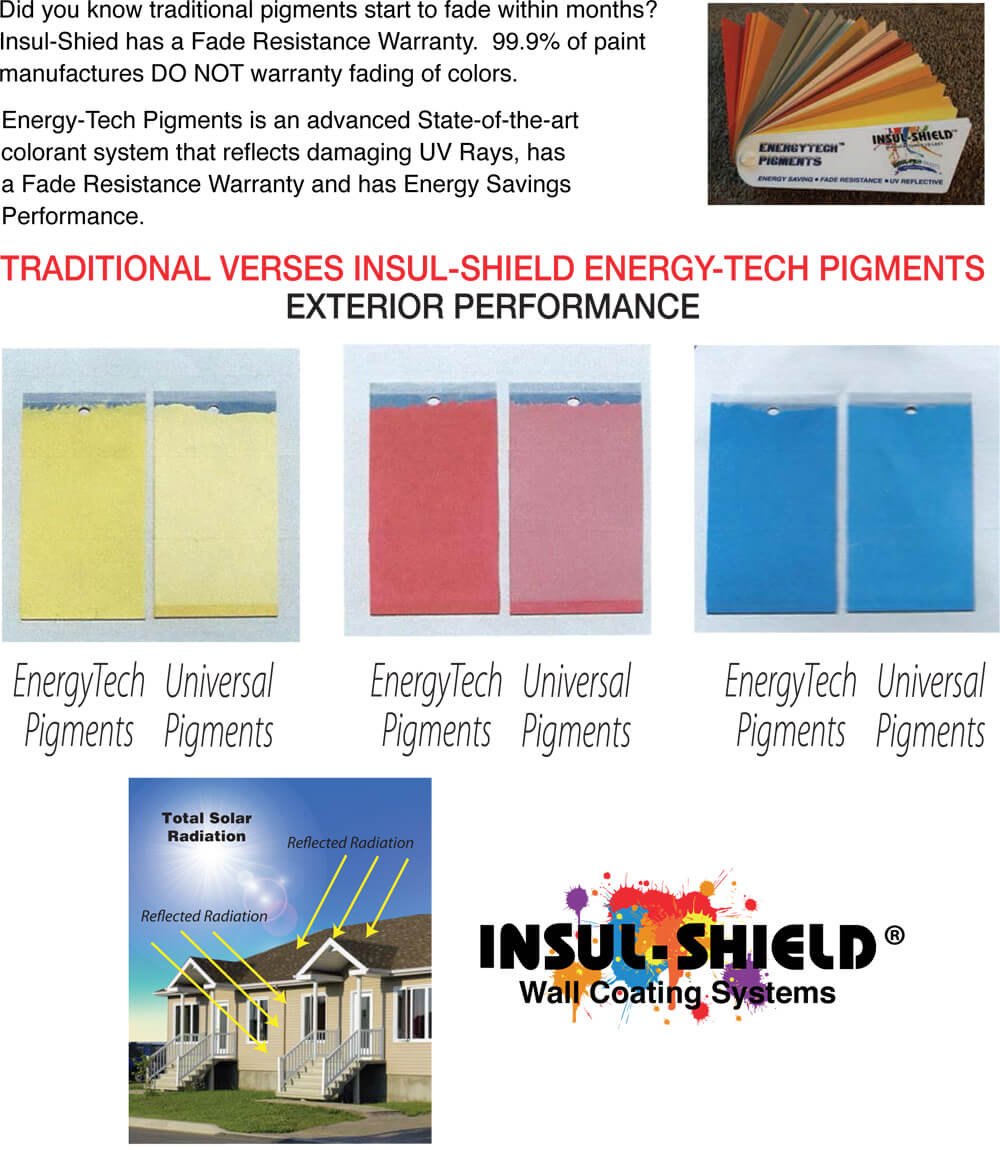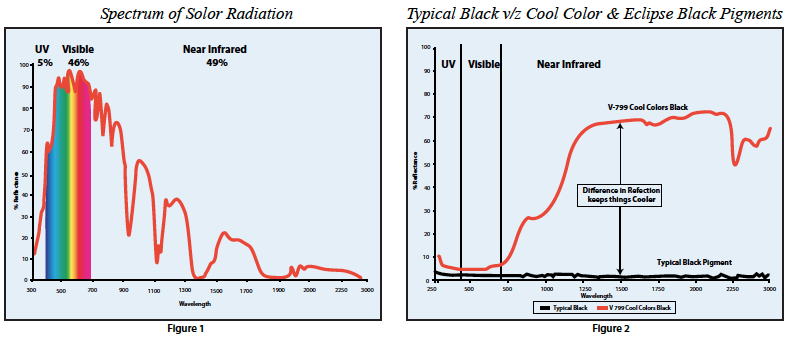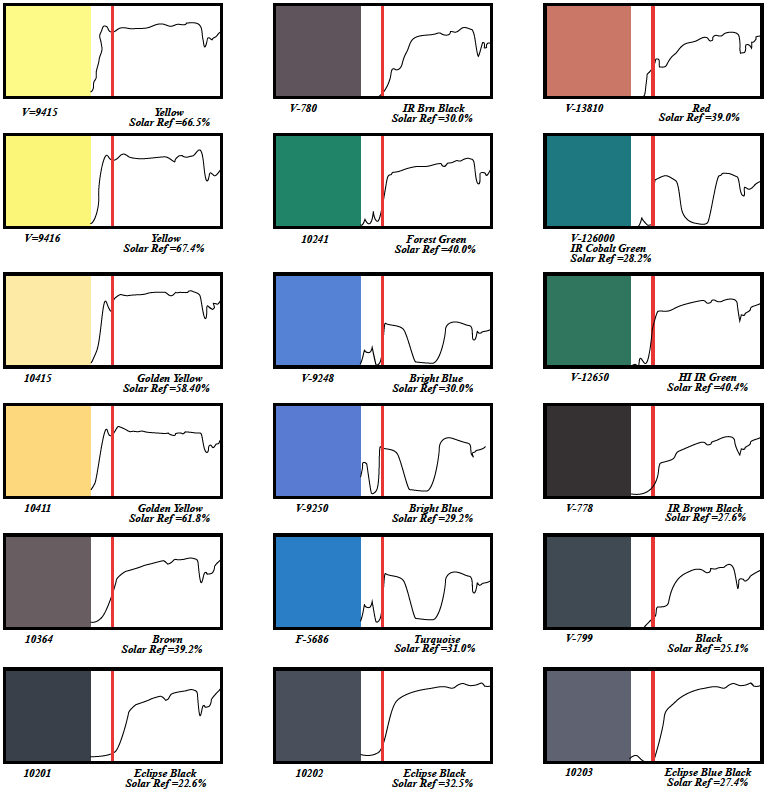Energy Saving & Fade Resistant Pigments
INSULPRO PAINTS®
ENERGY TECH™ PIGMENTS
IR Heat & Energy Saving Pigments

A brief explanation on How Energy Tech Pigments work
The electromagnetic radiation from the sun that strikes the Earth consists of radiation in the wavelengths of about 300 nanometers (nm) to 2500 nanometers. The wavelength region below 400 nanometers is called Ultraviolet (UV). The UV region can cause damage to our bodies and skin, and so causes degradation to paints and polymers. The Visible region, 400 to 700 nanometers, is the area where our eyes are attuned to see light in all its various colors. The final area from 700 to 2500 nanometers is the Infrared (IR) region. These longer Infrared wavelengths are invisible to the eye, yet contain about half of the solar energy which strikes the earth (see Figure 1).
We see different colors by selective absorption and reflection in the visible region, in other words, we see a red color because the radiation in the red portion of the spectrum is reflected, and all the rest of the radiation in the visible range is more of less absorbed. We can’t see in the infrared portion of the spectrum, so we really can’t determine what is going on there by sight. But we can feel the effects of this infrared energy in the form of Heat.
Touch your asphalt driveway, climb on your shingled roof, or place your hand on your black automobile when it’s been out in the sun for a while. It’s quite HOT! In fact, some dark colored roofing can attain a temperature of 190 degrees Fahrenheit or more. Why, Well it’s because these materials absorb a large portion of the infrared radiation from the Sun. Look at the second chart below (Figure 2). We show a typical black pigment versus one of our Energy Tech & Eclipse Black Pigments, V-799. Notice the difference in the curves. The typical black pigment absorbs the radiation across the whole solar spectrum, where the V-799 Black reflects in the invisible Infrared portion. The color appears black in the visible portion of the spectrum, but reflects in the invisible Infrared portion. This results in significantly less solar energy being absorbed, which means less heat being absorbed.
Scientists began work on this type of selective reflection and absorption for Military applications many years ago. We are now finding commercial application for this technology in such areas as Cool Roofing, Vinyl siding, Coil and other coatings, automotive applications and many other plastic and coating applications where Solar Heat is a problem. In addition, these pigments are among the most durable and weatherfast pigments known. For more information call us at 1-855-INSULPRO.

Shown below are the Solar Reflectance curves and Total Solar Reflectance reading for each of Energy Tech Pigments. The curves start at 250 nanometers and end at 2500 nanometers. This encompasses the UV, Visible and infrared portions of the Solar Spectrum. The red vertical line on each graph shows approximately where the Visible portion of the spectrum ends and the Infrared portion of the spectrum begins. For more information call us at 1-855-INSULPRO.

Data or recommendations are based on laboratory preparation and/ or testing samples; therefore they cannot be expected to fully duplicate commercial production or field performance. Final approval and acceptance should be based on appropriate production and service tests.

